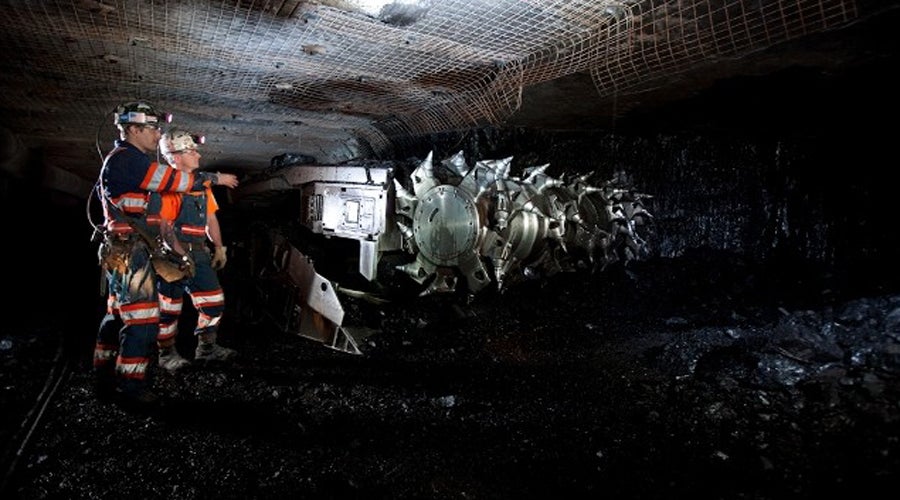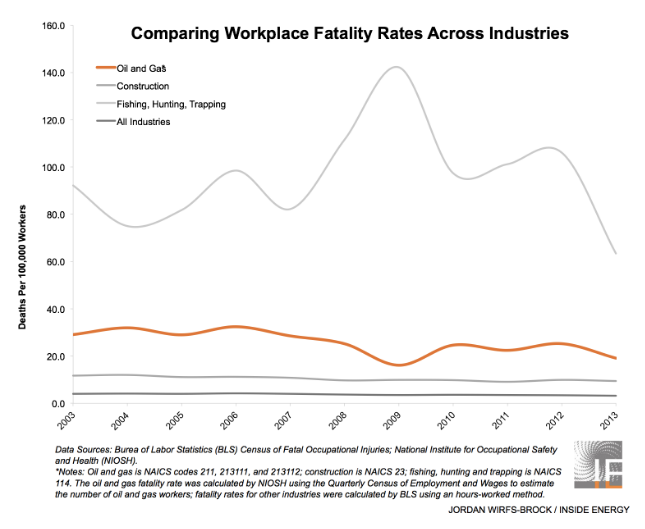CHATLANI: Striking a Balance Between Profit, Workers, and the Environment
Posted in In the News Student Leaders | Tagged Coal, Economics, Energy, Environmental Justice, Industry Dive, Peabody Energy, Shalina Chatlani, Worker Rights
Shalina Chatlani (SFS ’17) interns for Industry Dive and is an Undergraduate Writing Fellow for the Kalmanovitz Initiative. We are honored to host her blog posts on our website, including this in depth look at the struggle to balance the profitability of the energy industry, the needs of workers, and sustainability.
Industry employers sit atop a forever moving pendulum between profit and workplace satisfaction. Balancing the needs and, more importantly, the safety of workers with a company’s bottom-line can seem daunting; many industry stakeholders, however, would contend that the challenges do not matter. Workers must always come first.
Employers care most about the economic argument. When workers are dissatisfied, their productivity decreases, they feel less engaged, and they are less invested in producing goods. Employers experience a profit squeeze, having to hire more employees to make up for losses in productivity. Talent for Development summarized the idea perfectly in its article, “The Value of Engagement: Unraveling the Mystery”:
“Many studies have connected engagement to a variety of important measures. Studies have found that companies with high levels of engagement are more productive, more admired, and more successful. Individual studies show a correlation between engagement and measures such as productivity, sales, safety, retention, customer satisfaction, and profits.”
But even if the standard economics argument of treating workers with respect seems a little dubious, the legal and ethical perspectives are indisputable. As I’ve said before, workers rights are human rights, whether that sentiment comes in the form of equal opportunity or a workplace free of hazardous materials. When those rights are infringed upon, the results for employers can range from costly suits to regulatory scrutiny and a bad reputation. The consequences for the employees are obvious. Needless to say, it seems like offering employees the consideration they deserve is the right thing to do on all fronts.
However, the analysis becomes muddled when considering workers who lack union representation and live paycheck to paycheck. An employer might not feel as pressured to focus on workplace satisfaction as he would at a company where workers can quit at any time and where legal recourse is possible. This is important to consider, as only 11% of workers in the United States have union representation, according to 2015 U.S. Bureau of Labor data.
These circumstances tend to apply to a number of energy sector and waste jobs that involve grueling manual labor, precarity, and hazardous workplace environments. This is not to say that CEOs in the utility industry do not care for their workers, but rather that workers in this industry face significant workplace danger.
It is true that the majority of high-profiting energy sector, hard labor jobs–fracking, coal production, uranium mining–will always carry an element of danger. Yet this fact does not mitigate that importance of paying attention to the workers and their safety. In fact, it makes worker safety an even greater priority.
Inside Energy reported in 2014 that a “worker in the oil and gas industry is six times more likely to die on the job than the average American worker.”
A prominent example of a sector with hazardous work environments is the coal industry. Coal has caused a number of irreversible environmental and human rights setbacks for the community at large, as reported by The Nation. In fact, the U.S. Commission on Civil Rights is focusing its 2016 enforcement report on instances of environmental injustice, with specific interest on coal ash waste disposal. The coal industry has dealt with toxic coal ash spills polluting water supplies in minority group communities. Miners have faced extreme workplaces illnesses and injuries. Industrial employees have felt the health effects of destructive air pollution.
The coal industry moved back into the limelight this year with reports of ‘Big Coal’ going bankrupt. As the media swarmed to cover news on the economic and environmental fallout of companies like Peabody Energy tanking, the stories of the workers also surfaced. The financial misfortune of coal companies has a devastating impact on their respective workers and communities.
A CBS article quoting Robert Godby, the director of the Center For Energy Economics and Public Policy at the University of Wyoming, shows how safety has taken a backseat to economic concerns in coal mines, in which three workers died during the first weeks of this year.
“Safety is always an issue in the mines, and as costs become more important, it is something that can be skimped on,” said Robert Godby, director of the Center For Energy Economics and Public Policy at the University of Wyoming. “People hate to shut down a mine, and when times get really tight and you see unemployment above 10 percent in a lot of those counties, how do you keep a mine operating? Safety becomes a trade-off to keep your job.”
Environmental groups rejoiced at the death of Peabody Energy, the largest coal company in the country, seeing an opportunity for an alternative energy company to step in and transform the nation’s energy future, while also putting Americans on a path to sustainability and a greener environment.
However, as the article from The Nation warns, rejoicing might be a bit premature. Workers and affected communities are still dealing with the internal and external pollution of working in coal mines.
These workers are susceptible to the dangers of working in the coal industry, but they also rely on it for their livelihood. Even as the coal industry finally takes the heat for years of environmental neglect, the pendulum between welfare and economics still swings!
“But while greens hailed King Coal’s downfall, the heart of coal’s empire shuddered: From North Yorkshire to Appalachia, where mineworkers fought and died for decent livelihoods in the mines, a way of life that sustained generations is evaporating. Paradoxically, these mining towns are also on the front line of the worst immediate impacts of coal pollution, but that doesn’t make the disruption any less painful.”
Energy sector jobs have put workers in a tough position. So, what is the solution?
A good first step is recognizing that economic, environmental, and human rights concerns must be considered, but that in the end the rights of workers must be a priority. In the transition toward alternative energy, the safety and welfare of the workers who sustain the industry must be prioritized before the economic considerations. Obviously, this is easier said than done. But, the Nation’s article suggests a possible compromise:
“As Peabody seeks a bailout for its financial failure, the federal government should ‘intervene in the legal process and the political process’ to protect worker interests while ensuring that corporate assets ‘be used to address the needs of the public and workers in the industry and communities that have been exploited by Peabody.’
Going forward, the long-term economic math works out clearly in favor of a just transition. According to one study: ‘A dollar invested in energy efficiency and alternative energy creates more than twice as many jobs as the same amount invested in coal or gas.’ In terms of jobs per dollar, biomass, wind, and solar each produce more than twice as many labor opportunities as natural gas (the so-called “bridge fuel” that’s now busting after a short boom).”
When workers’ rights and equal opportunity are heavily considered alongside economic and environmental interests, the pieces of the puzzle will come together. It is important to remember that while industry may be making the profit, the employees are doing the work.
You can read more from Shalina on our website .


